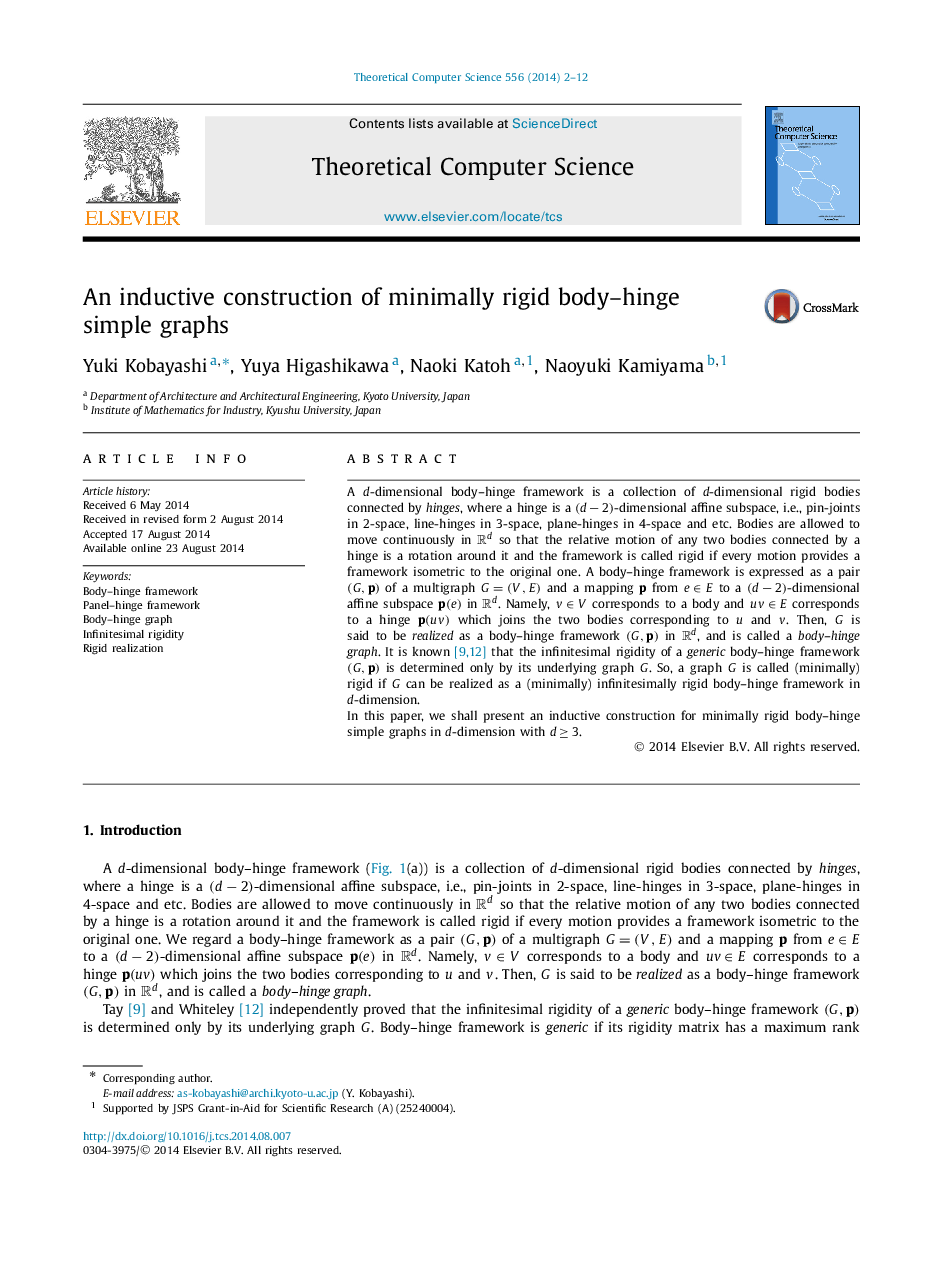| Article ID | Journal | Published Year | Pages | File Type |
|---|---|---|---|---|
| 434202 | Theoretical Computer Science | 2014 | 11 Pages |
A d-dimensional body–hinge framework is a collection of d-dimensional rigid bodies connected by hinges , where a hinge is a (d−2)(d−2)-dimensional affine subspace, i.e., pin-joints in 2-space, line-hinges in 3-space, plane-hinges in 4-space and etc. Bodies are allowed to move continuously in RdRd so that the relative motion of any two bodies connected by a hinge is a rotation around it and the framework is called rigid if every motion provides a framework isometric to the original one. A body–hinge framework is expressed as a pair (G,p)(G,p) of a multigraph G=(V,E)G=(V,E) and a mapping p from e∈Ee∈E to a (d−2)(d−2)-dimensional affine subspace p(e)p(e) in RdRd. Namely, v∈Vv∈V corresponds to a body and uv∈Euv∈E corresponds to a hinge p(uv)p(uv) which joins the two bodies corresponding to u and v. Then, G is said to be realized as a body–hinge framework (G,p)(G,p) in RdRd, and is called a body–hinge graph. It is known [9] and [12] that the infinitesimal rigidity of a generic body–hinge framework (G,p)(G,p) is determined only by its underlying graph G. So, a graph G is called (minimally) rigid if G can be realized as a (minimally) infinitesimally rigid body–hinge framework in d-dimension.In this paper, we shall present an inductive construction for minimally rigid body–hinge simple graphs in d -dimension with d≥3d≥3.
